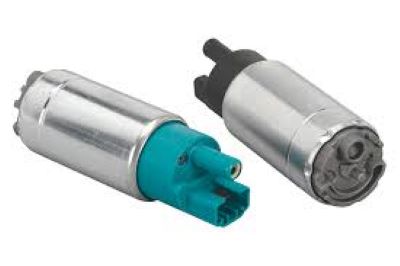What Happens When the Fuel Pump Goes Out While Driving? The first effect of a dying fuel pump that you'll notice when driving, is the loss of power as the engine it's no longer getting enough fuel to operate efficiently. Sputtering or jerking: If the pump is having trouble maintaining a steady pressure, you usually notice it with sputtering or jerking because 40 to 55 PSI of pressure are relatively standard ranges for most vehicles built within the past twenty years. Below this pressure level, fuel delivery to the engine will be inconsistent causing stalling. The outer tie rod end can fail in extreme cases such that the driver loses access to power steering or braking support;
A fuel pump can fail suddenly, or it might warn you with some symptoms before coming to a screeching stop. Another thing to watch for is the car being sluggish, at all times, not just when pressing the gas pedal; if it has difficulty accelerating regardless of whether or not your foot is on the gas. This is because the fuel pump can't deliver higher flow rates, usually 60 liters per hour in standard cars. Routine failures could leave the engine hungry for fuel, and its depperformance would tumble to abysmal levels.
In 2017, a high-profile fuel-pump failure touched Ford with the recall of 1.2 million vehicles to correct defective fuel pumps. This might result in the vehicle breaking down while driving, a very dangerous situation if it were to happen on a highway or other high-speed street. The recall associated with those reports also underscored how deeply fuel pump failures matter, because they can of course cause sudden stops—with that example of California's group to the left from 2019 verifying responses at high speed.
Another catastrophic effect of a fuel pump that has failed is decreased gas mileage. A pump that is beginning to fail will often work harder in order to provide enough fuel, and this leads to the engine consuming extra fuel. A faulty pump can reduce mileage by up to 20% and visualize added cost of fuel according to studies.

Sure, but remember: As legendary car journalist David Tracy once put it, “If the fuel delivery system on your ride fails, that’s well past an inconvenience—it’s a safety issue and needs immediate fixing.” This underscores the need to catch warning signs like coughing, hard starting, or lack of power before fuel pump problems grow.
If the pump does not work at all while driving, there is no other choice but to stop the car. Running the pump any more than this means that other parts of your fuel system such as the rail, or worse your injectors can become damaged too further adding to the repair bill. Indeed, a fuel pump replacement can run anywhere from $400 to nearly $800, and if the system is damaged further it could exceed $1,000.
This requires a SCHEDULED MAINTENANCE schedule to keep your fuel handlers running good filters and quality fuel can really save you from being broke completely. If you think your fuel pump is going bad, stop by Fuel Pump now and check out our range of tough, high-flow replacement pumps that will keep you on the road.